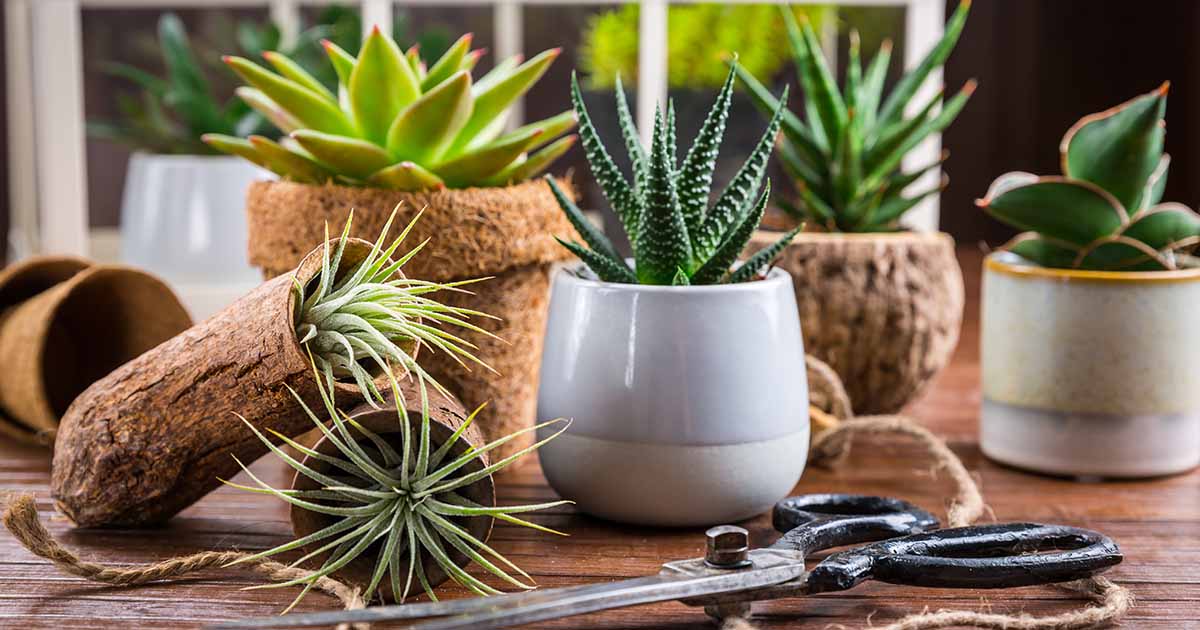
When I was a kid growing up in Williamsburg, Virginia, we townies would often visit the greenhouse atop the biology building at the College of William and Mary.
That’s where I first saw the possibilities for growing succulents in a greenhouse setting.
The horticulture department cultivated humongous mother of thousands plants there. Some grew eight to 10 feet tall with two-inch aerial roots and leaves at least a foot long.
Now, you’re probably not in the market for dozens of massive pots of my childhood favorite, but greenhouse life suits many other succulent varieties.
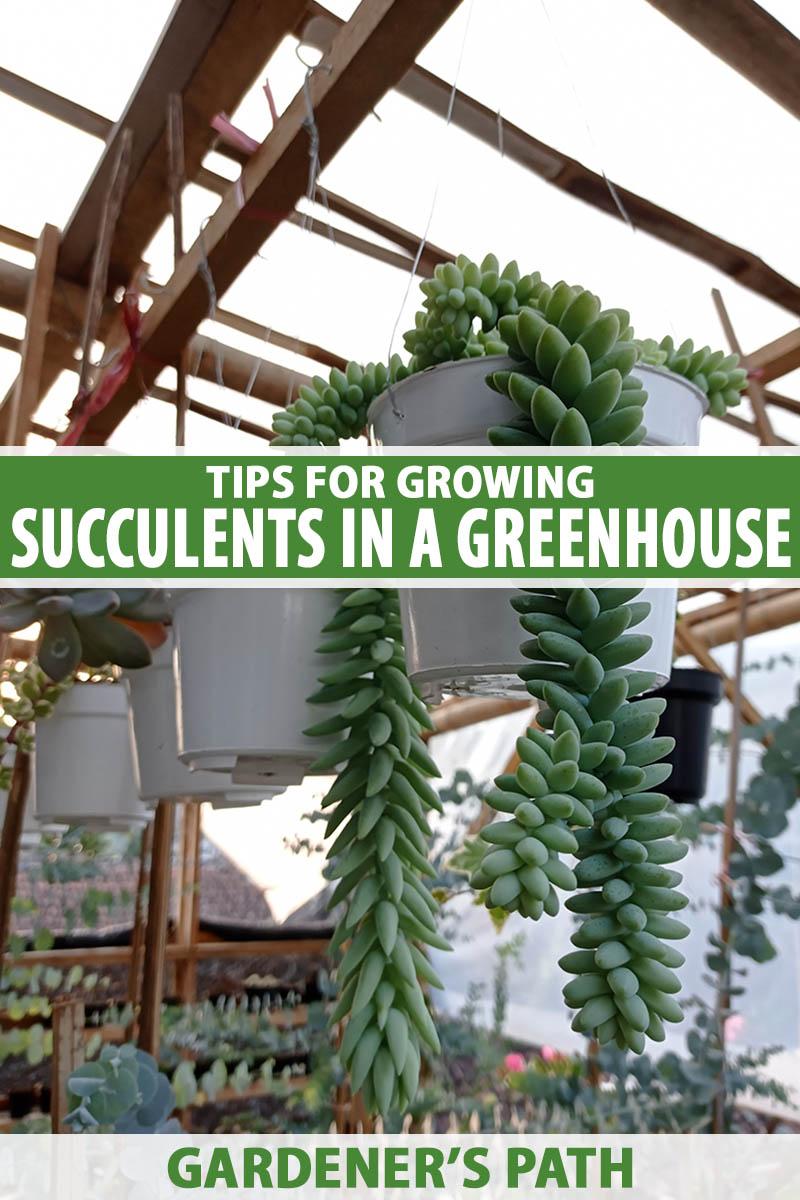
We link to vendors to help you find relevant products. If you buy from one of our links, we may earn a commission.
You can employ a small home greenhouse or a giant hoop structure to root cuttings, overwinter tender succulent varieties, or perhaps as a year-round home for these easy-care plants.
There is a knack to growing succulents in a greenhouse instead of outdoors in the garden or inside your home, but many of the basic requirements are the same.
Let’s jump right in. Here’s what I’ll cover:
Types of Succulents to Grow in a Greenhouse
A greenhouse haven provides a plethora of benefits for succulent gardeners.
It offers a warm spot for overwintering tender varieties, or for propagating cuttings in early spring.
A greenhouse can protect these easy-care houseplants from the drafts they can’t abide at any time of year, and depending on placement, it may provide the ample light your dwelling lacks.
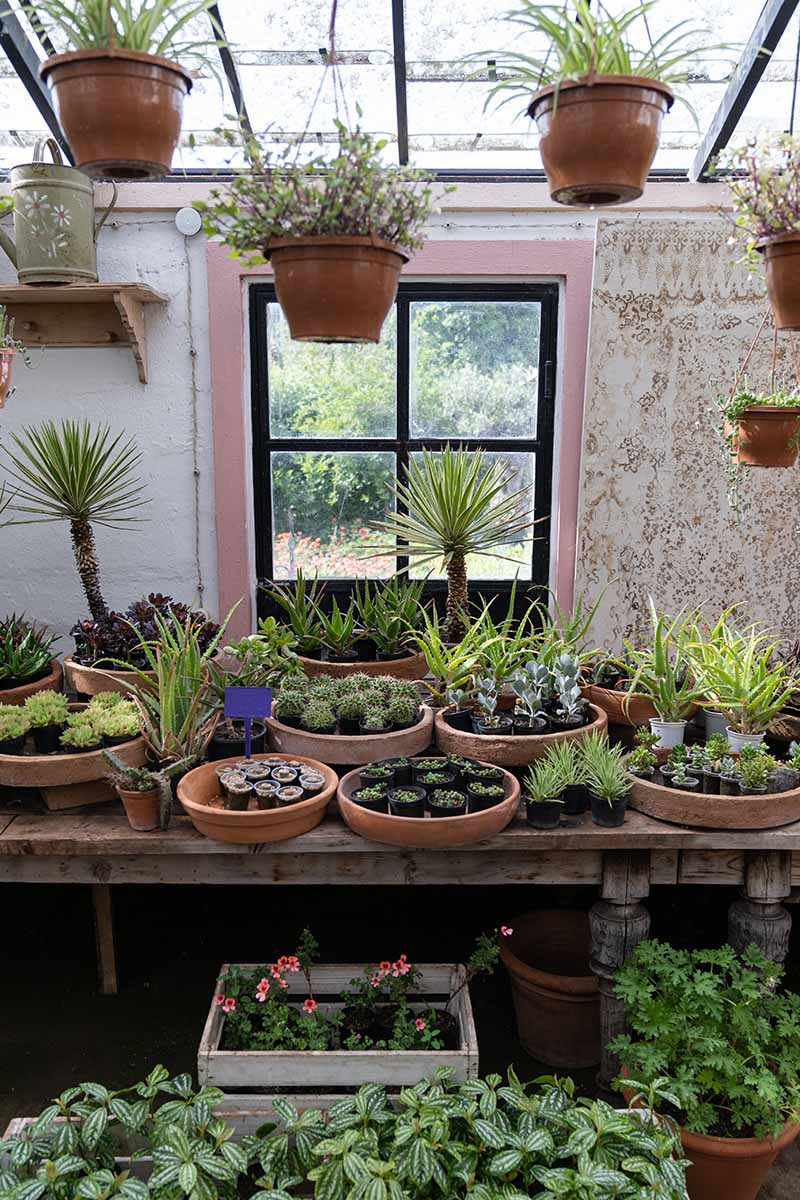
Many succulents don’t really need the protection that a greenhouse offers, and I would advise against taking the trouble to grow them in a structure unless you live in Zones 1 to 3.
Most types of euphorbia, sedum, and hens and chicks, for example, are hardy to -20°F and can overwinter just fine in a garden bed or outdoor container, so a protected shelter could be a waste.
Many other varieties are frost-tender, however, and you may welcome the chance to maintain a structure where they can grow year-round or overwinter in the cold months. A few in this category include kalanchoe, aloe, haworthia, and living stones.
Also, when you’re thinking about their suitability for greenhouse life, consider how big the plants will grow.
Some varieties may quickly outgrow a small space, including certain types of sansevieria, agave, and the mother of thousands I told you about earlier.
And if you must transition such plants in spring and autumn, the big varieties can be unwieldy and heavy to move in and out.
Trailing succulents can be lovely in a greenhouse, and you may be able to hang them to save space in your home and within the setting. Consider options like donkey’s tail or elephant bush.
The other consideration has more to do with the conditions inside the structure and less with the plants you plan to grow there.
Succulents ordinarily need just 40 percent humidity, though they’ll do okay with 50 percent.
Indoor gardeners often employ greenhouses for growing high-humidity lovers like anthurium.
Alas, succulents have that conflicting need for low to average humidity, so unless you are willing to maintain separate, smaller mini greenhouses for the two different types of plants, you may have to skip one or the other.
Some varieties, like kalanchoe, are oblivious to humidity, so you may choose to grow them alongside hothouse tropicals.
Tips for Growing
A greenhouse isn’t a cure-all for succulents that can’t stay warm enough or receive enough light in other settings.
You’ll still need to provide these optimal growing conditions:
Exposure
Not all light in a greenhouse is created equal. Most succulents need at least six hours of bright, indirect light each day, though they can do with a little less in the winter months.
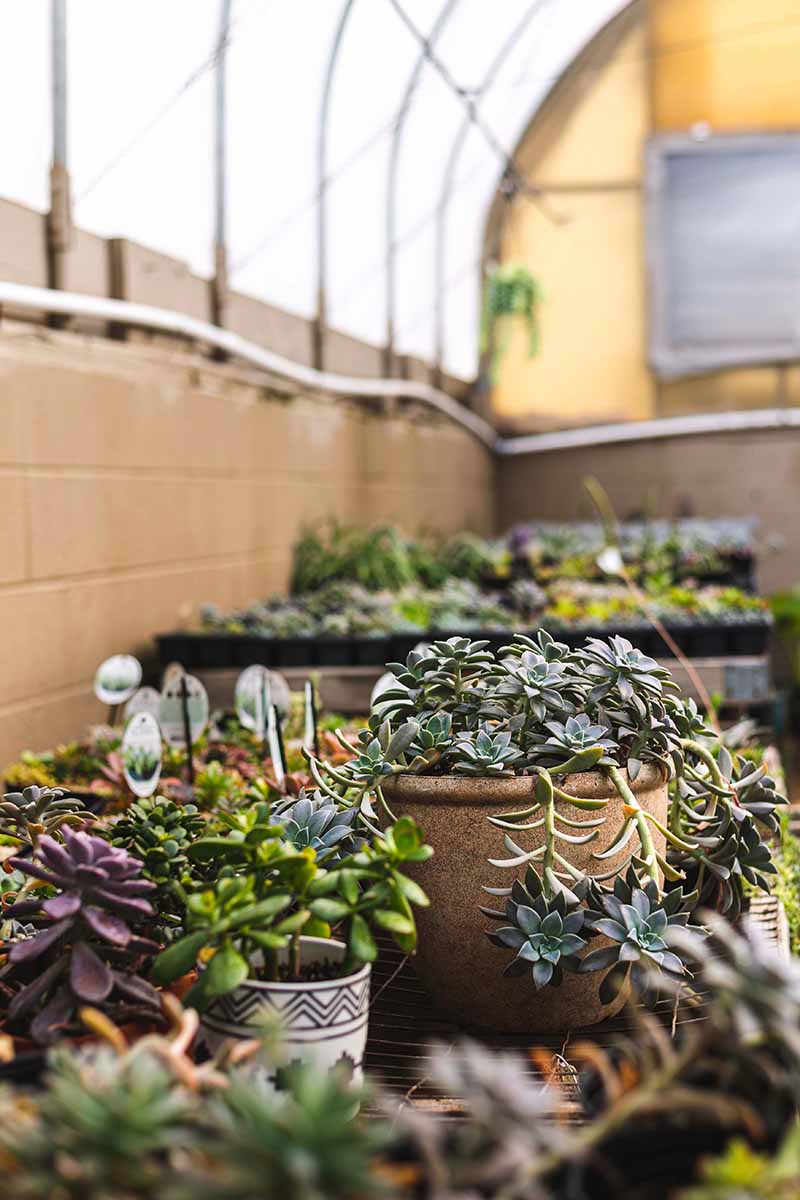
But direct sun can scald the leaves or kill the colors on variegated foliage. Consider placing the plants in an area of the structure that’s naturally shaded from the afternoon sun, or provide some shade.
Our guide to avoiding greenhouse mistakes has specifics on providing shade where needed.
On the flip side, some areas of the structure, even one made of glass, may not offer enough light. That situation arises when the structure is situated out of direct sunlight or the shelves are arranged in a way that casts shade on the plants.
In this case, you may opt for supplemental light, especially during the shorter winter days. See our grow light guide for some suggestions.
Temperature
The ideal temperature for most succulents is 70 to 75°F during the day, and a little cooler at night.
Of course, the range they can survive is much broader, but in most cases, you’ll want to provide a range between 40 to 80°F and take steps to cool or heat the greenhouse if the temperature falls or rises to either extreme.
You’ll need to watch the weather and check the temperature daily if you’re able, since scalding or freezing can kill the plants very quickly.
Humidity and Air Circulation
Wherever you grow them, most succulent varieties prefer humidity levels around 40 percent and generally no higher than 50 percent.
When there is too much moisture in the surrounding air, the plants are susceptible to root rot and a variety of fungal infections.
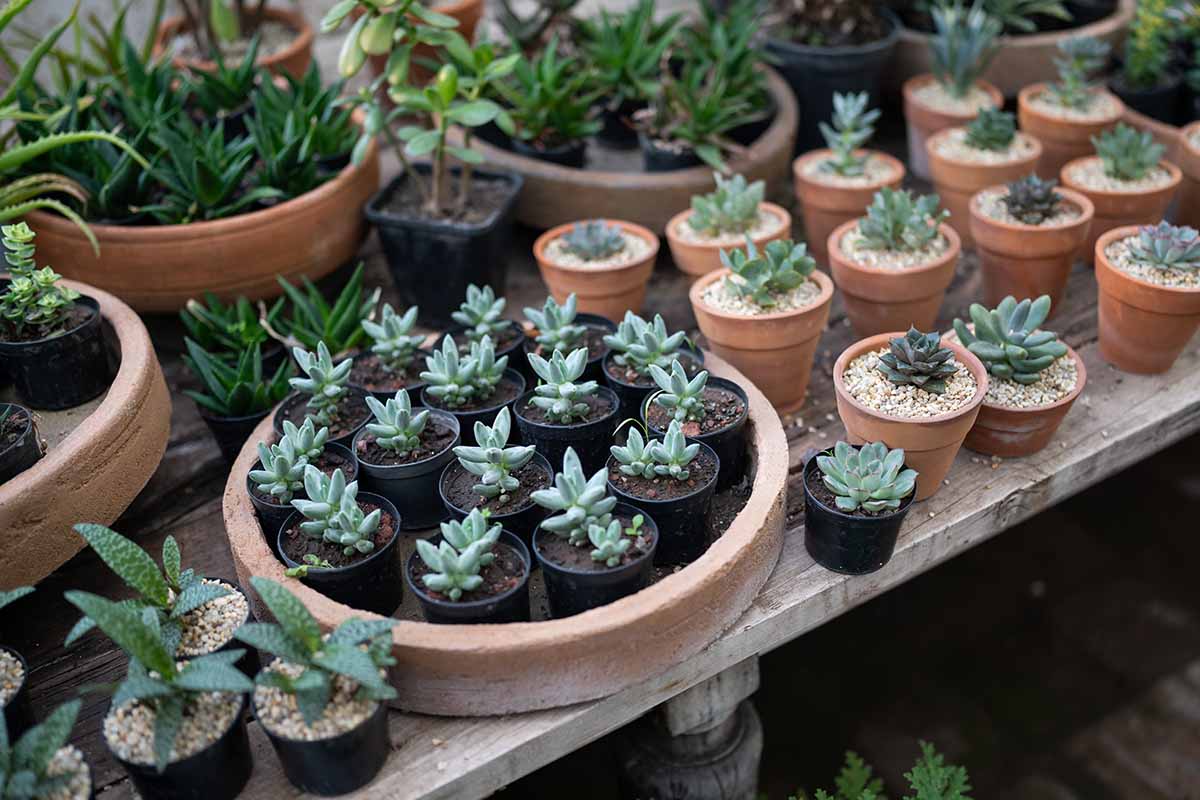
Most indoor gardeners balk at installing a dehumidifier in a greenhouse already equipped with supplemental light and heat, and I do, too.
But you can take steps to decrease the humidity by ensuring that water drains into saucers instead of falling on the floor and evaporating into the air. Make sure you empty the saucers outside.
Also, space the plants at least four inches apart to ensure adequate air circulation, allowing the leaves to dry and prevent moist air from building up around them.
Pots and Soil
Succulents from snake plants to living stones require pots with drainage holes made of porous material, like unglazed terra cotta.
The pots should be snug, with soil an inch below the rim so water doesn’t drip off the top without ever reaching the roots.
Well-draining soil is critical for all potted and garden succulents. Without it, they are prone to rotting and susceptible to diseases promoted by excess moisture.
You can learn to make a DIY succulent mix in our guide or use a store-bought preparation. Remember, ordinary yard or garden soil isn’t suitable for these plants.
To keep the roots from sitting in pooled water, it’s also important to water the plants thoroughly when the soil is dry and then allow them to drain into a saucer or tub afterward. Discard any excess.
Placement
It’s critical to arrange your pots so your plants have adequate light and space, according to their needs.
Don’t place small containers directly below hanging baskets for example, or you’ll risk dripping water on the foliage or blocking much-needed light.
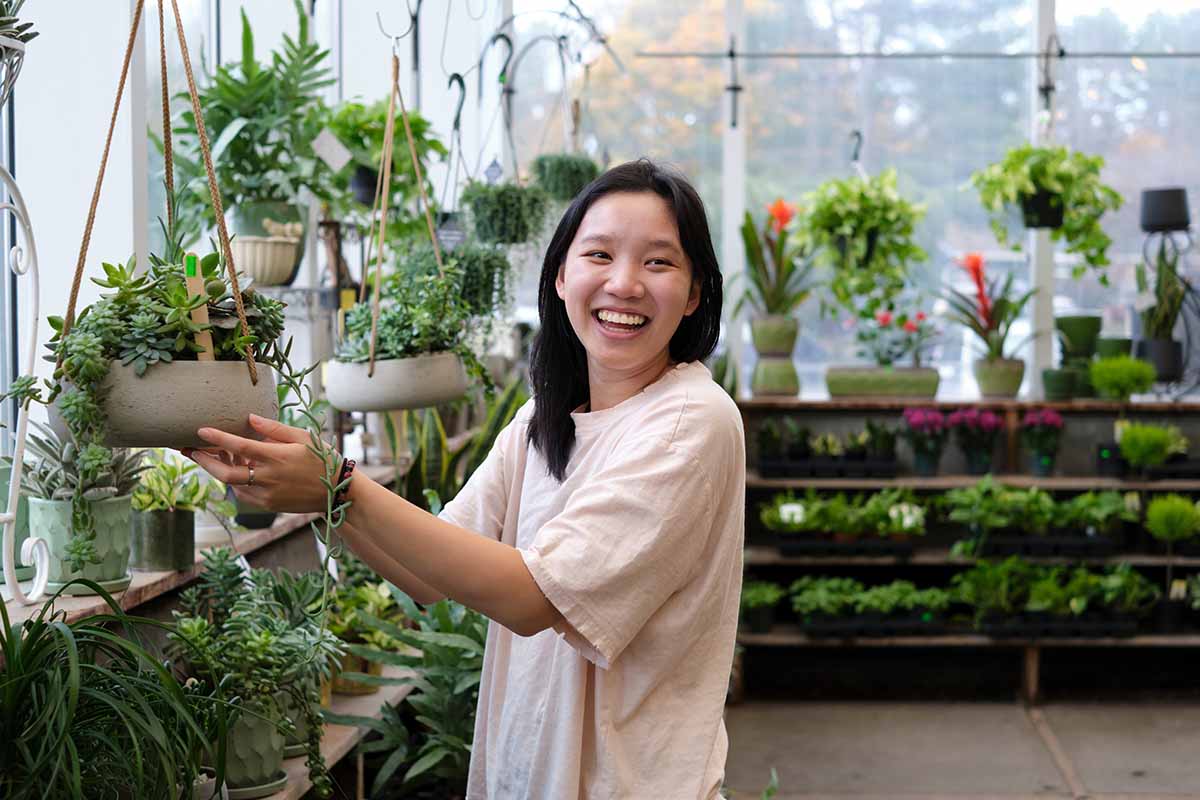
Plants may freeze or experience drafts if you set them directly on the ground inside a greenhouse during the winter. They’ll do better on a lower shelf instead of on the cold ground.
Also, as mentioned above, take care to give the plants ample space to discourage excess moisture buildup and humidity that can invite disease.
If you think about it, consider arranging the plants in an eye-pleasing pattern.
After all, you should enjoy their appearance as much in a greenhouse as when they’re growing outdoors or in your home.
Overwintering
To use a greenhouse to overwinter frost-tender succulents, first research the USDA Hardiness Zones for your particular variety, and the average local temperatures from month to month.
You can expect a greenhouse to gain about 10°F of heat in a direct or partial-sun location, but be sure to observe the temperature range in your own structure for at least a few days before relocating plants for the cold months.
And then check the thermometer daily for the rest of the winter to see that it’s maintaining temperatures between 45 to 80°F.
Outdoor temperatures over 70°F or so can damage the plants, so you’ll want to open the vents or windows to cool off on hot days.
Water thoroughly, but only when the soil is entirely dry – but before the leaves start to shrivel.
Overwintering plants still need air circulation, though drafts are a no-no.
Usually, a fan is adequate if you run it at least a couple of hours per day, but don’t open those windows in freezing weather! Even one sub-freezing day can kill most potted succulents.
Just as you would any other container-grown houseplant that spends the summers outdoors, you’ll need to acclimate the plants you’re moving by exposing them to the new conditions for an hour the first day and increasing the amount by a couple of hours each subsequent day over the next three or four days.
In spring, harden off the plants before moving the containers outside full-time or transplanting them back into the garden.
Our guide to growing succulents offers more information on transitioning succulents from outdoors to inside and back out again.
Propagating
When you wish to start new succulents from cuttings or leaves, a greenhouse can be your friend.
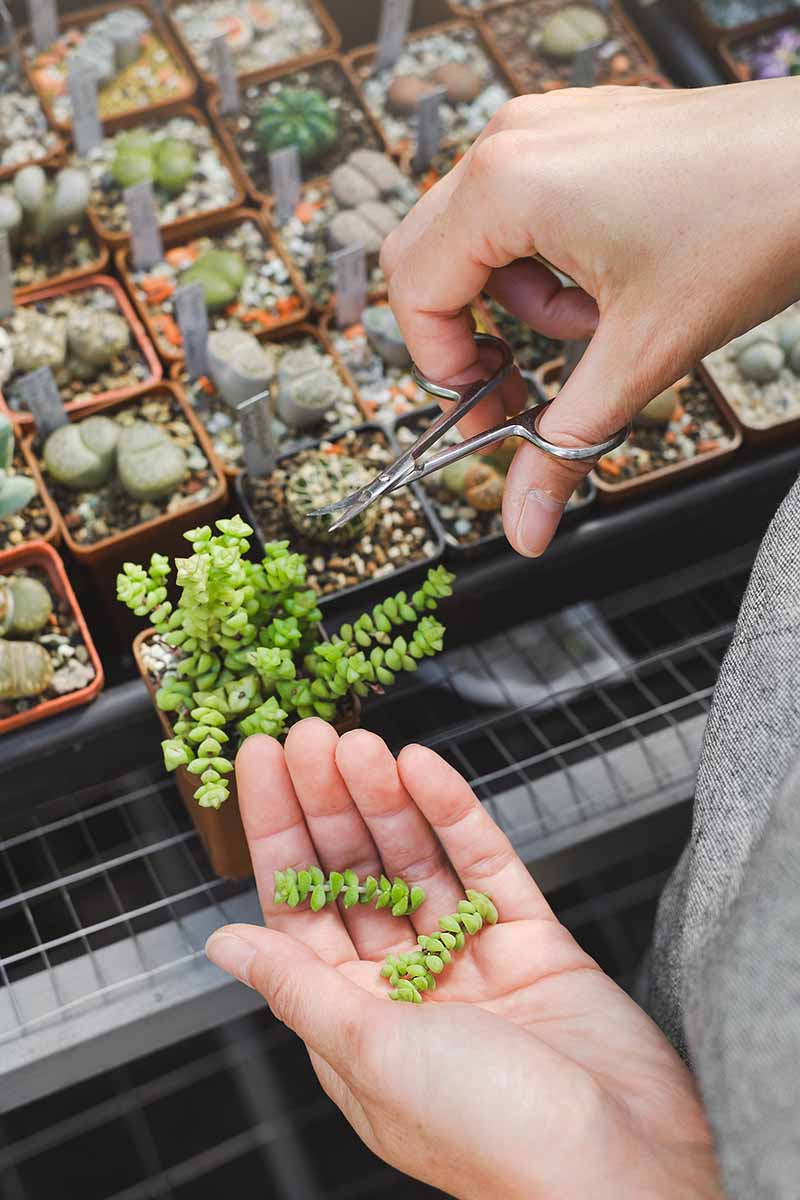
It may have more of the bright, indirect light needed for root formation than an average household windowsill, for example.
In early spring in cooler growing zones, a greenhouse provides the temperature boost required to start cuttings from plants just as they’re coming out of dormancy.
And if you’re like me and can’t seem to stop at just a few cuttings, a greenhouse may provide the extra room you need to start (or attempt to start) several trays of succulents simultaneously.
You can learn more about propagating succulents in our guide.
Home Sweet Home
Whether you’re a newbie who jumped on the succulent-growing trend during lockdown or a veteran indoor gardener who’s grown jade, aloe, and Christmas cactus for decades, you may find that the greenhouse option expands your propagation options or helps you keep these plants alive over the winter.
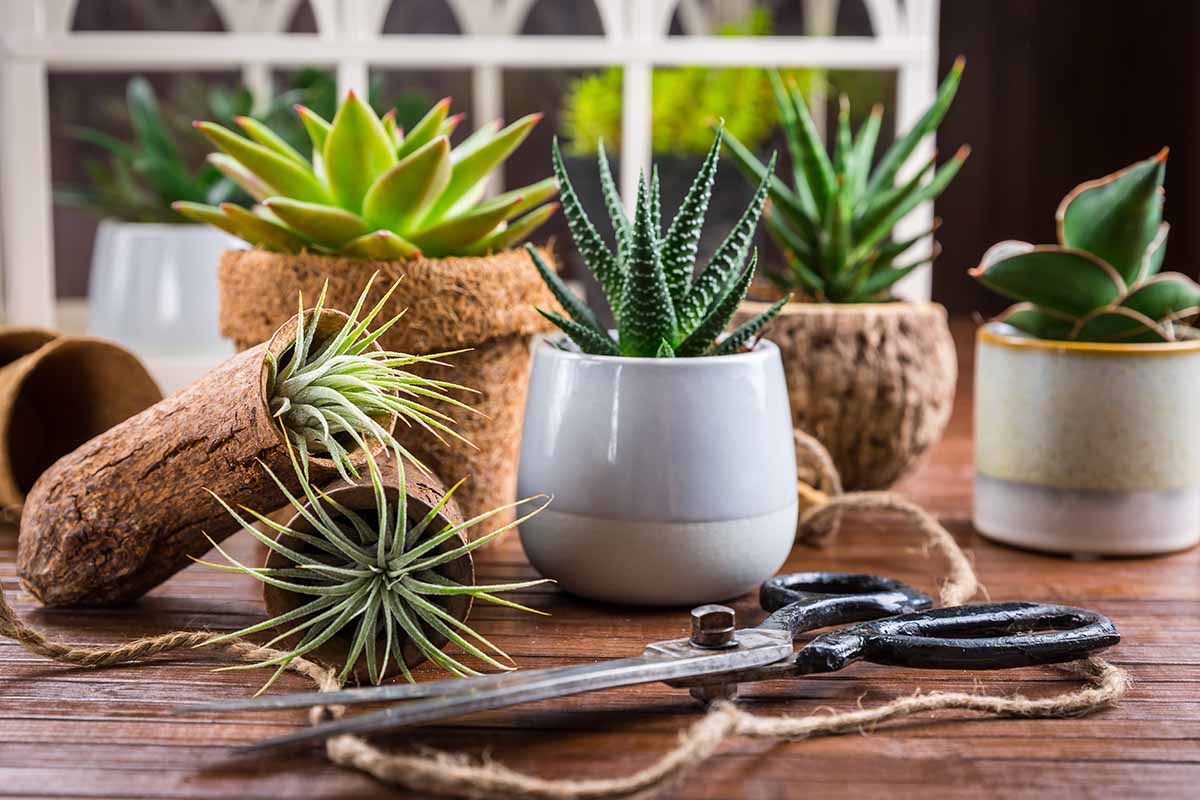
Do you have experience growing succulents in a greenhouse or any questions about the process? We’d love to hear from you in the comments section below.
And for more greenhouse-growing know-how, check out these guides next:





